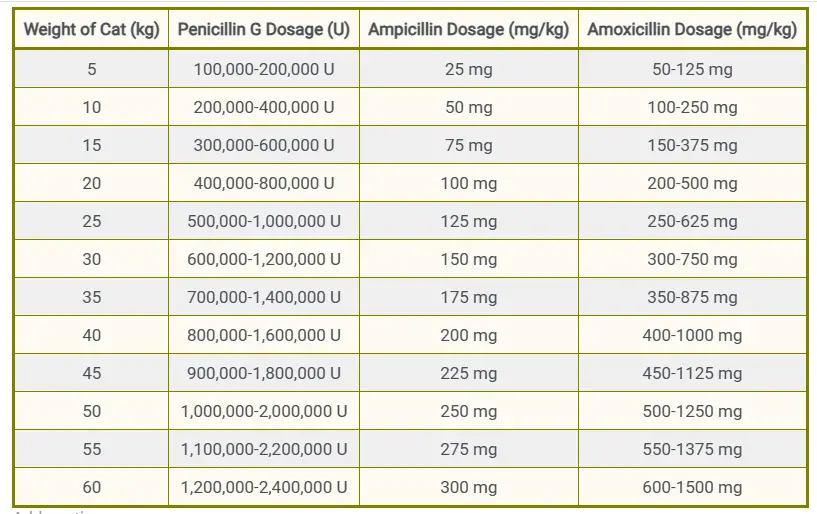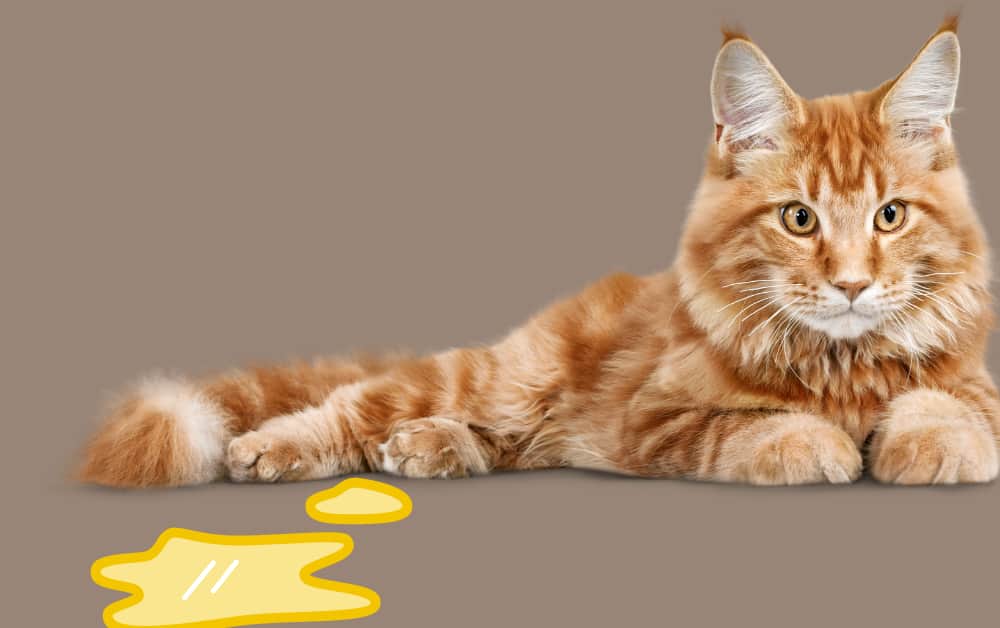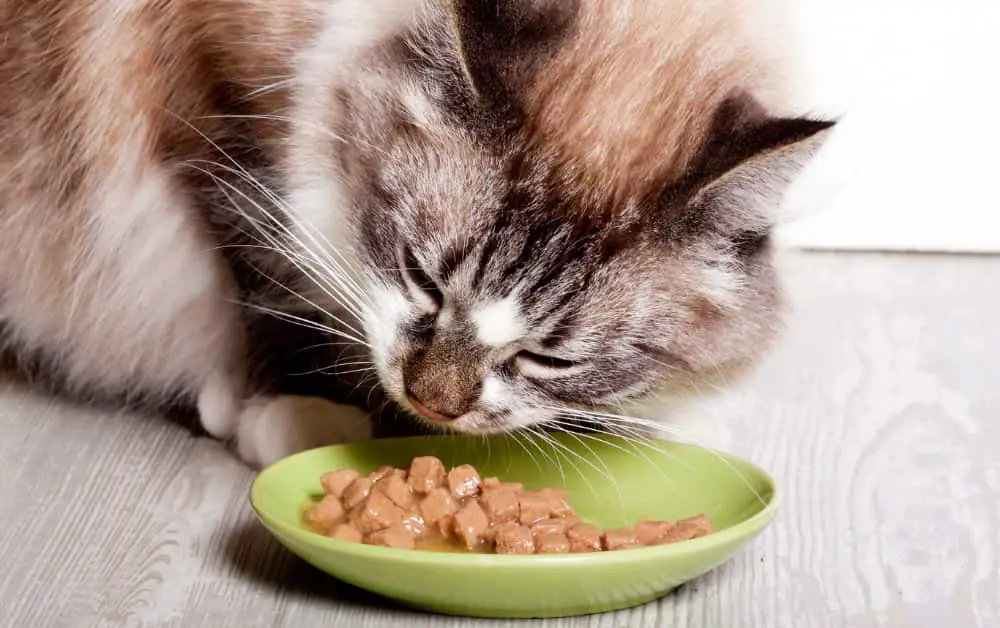In the realm of veterinary medicine, antibiotics play a vital role in treating bacterial infections in animals, and penicillin for cats stands as one of the oldest and most widely used antibiotics. While primarily associated with human medicine, penicillin’s efficacy extends to the animal kingdom, including cats.
It’s crucial for pet owners to understand the uses, administration, and potential risks associated with penicillin when treating their beloved feline companions.
Disclaimer: Self-medication can be hazardous. Please consult your veterinarian for personalized guidance on the appropriate dosage for your feline friend specific condition.
What is Penicillin For Cats?
Penicillin for cats is an antibiotic medication used to treat bacterial infections in felines. It belongs to the penicillin class of antibiotics, which work by interfering with the bacteria’s ability to build their cell walls, ultimately leading to their destruction.
Penicillin is commonly prescribed by veterinarians to treat a variety of infections in felines, including skin infections, respiratory infections, urinary tract infections, and certain types of bacterial diseases.
However, it’s important to use penicillin for cats only under the guidance and prescription of a qualified veterinarian, as improper use or dosage can lead to adverse effects or antibiotic resistance.
How Penicillin Work?
When administered to cats, penicillin targets bacterial infections by disrupting the bacteria’s cell wall formation process. This action weakens the bacteria, allowing the cat’s immune system to more effectively eliminate the infection.
Penicillin G Dosage For Cats
The ideal dosage of Penicillin G for cats is 20,000-40,000 units per kilogram of body weight given subcutaneously or intramuscularly.
- For mild to moderate infections: The typical dosage may range from 10,000 to 20,000 units per pound of body weight, given two to three times a day.
- For severe infections: The dosage may be higher, up to 40,000 units per pound of body weight, given two to three times a day.
It’s important to note that these dosages are approximate guidelines, and the actual dosage prescribed by the veterinarian may vary. The duration of treatment will also be determined by the severity of the infection and the cat’s response to the medication.
Ampicillin Dosage For Cats
The dosage of ampicillin for cats, like with any medication, should be determined by a qualified veterinarian based on factors such as the cat’s weight, the severity of the infection, and its overall health condition.
The veterinarian-recommended dosage of ampicillin for cats is 3 mg/lb (5 mg/kg) of body weight administered twice daily by subcutaneous or intramuscular injection.
- For mild to moderate infections, the typical dosage may range from 5 to 10 mg per pound of body weight, given two to three times a day.
- For severe infections, the dosage may be higher, up to 20 mg per pound of body weight, given two to three times a day.
Amoxicillin Dosage For Cats
The typical dosage of amoxicillin for cats is 10-25 mg/kg of body weight, administered orally every 12-24 hours. However, it’s crucial to consult a veterinarian before giving any medication to your cat, as they can provide the appropriate dosage based on your cat’s specific condition and health history.
Never give your cat medication prescribed for humans without veterinary approval, as doses and formulations can differ significantly between species.
Penicillin Dosage Chart For Cats
| Weight of Cat (kg) | Penicillin G Dosage (U) | Ampicillin Dosage (mg/kg) | Amoxicillin Dosage (mg/kg) |
|---|---|---|---|
| 5 | 100,000-200,000 U | 25 mg | 50-125 mg |
| 10 | 200,000-400,000 U | 50 mg | 100-250 mg |
| 15 | 300,000-600,000 U | 75 mg | 150-375 mg |
| 20 | 400,000-800,000 U | 100 mg | 200-500 mg |
| 25 | 500,000-1,000,000 U | 125 mg | 250-625 mg |
| 30 | 600,000-1,200,000 U | 150 mg | 300-750 mg |
| 35 | 700,000-1,400,000 U | 175 mg | 350-875 mg |
| 40 | 800,000-1,600,000 U | 200 mg | 400-1000 mg |
| 45 | 900,000-1,800,000 U | 225 mg | 450-1125 mg |
| 50 | 1,000,000-2,000,000 U | 250 mg | 500-1250 mg |
| 55 | 1,100,000-2,200,000 U | 275 mg | 550-1375 mg |
| 60 | 1,200,000-2,400,000 U | 300 mg | 600-1500 mg |
The above Penicillin dosage chart for felines by weight is provided for educational purposes only and should not substitute for veterinary advice. Always start with the minimum dose for you feline until your vet prescribes an increase in dosage.
Related Post: Panacur Dosage For Cats
Dosage Guidelines
The dosage of penicillin prescribed for a cat will vary depending on factors such as the cat’s weight, the severity of the infection, and the specific type of penicillin being used.
It’s crucial to follow the veterinarian’s instructions carefully to ensure the cat receives the appropriate dose.
Methods of Administration
Penicillin for cats can be administered orally, via injection, or topically, depending on the nature of the infection and the veterinarian’s recommendation.
Injectable forms are commonly used for severe infections or when oral administration is not feasible.
Common Brand Names
- Human Variants: (Apothecon), Pfizerpen® (Roerig), Penicillin G Potassium®
- Veterinary Variants: Crystacillin® (Solvay), Flo-Cillin® (Fort Dodge), Crystiben® (Solvay), Dual-Pen® (TechAmerica)
Penicillin Uses in Cats
-
Prevention of acute vomiting
-
Treatment of chronic vomiting
-
Management of inflammatory bowel disease (IBD)
-
Alleviation of gastrointestinal upset
-
Postoperative care for nausea and vomiting
Related Post: Phenylpropanolamine Dosage For Cats
Penicillin Side Effects in Cats
- Allergic Reactions
- Gastrointestinal Upset
- Injection Site Reactions
- Neurological Symptoms
- Superinfections
Which Cats Should Not Take Penicillin.
Felines with the following health issues should not take Penicillin without veterinary recommendations.
- Cats with a history of allergic reactions to penicillin or other antibiotics in the beta-lactam class.
- Cats with kidney disease or impaired renal function.
- Felines with liver disease.
- Cats with a history of neurological disorders or seizures.
- Pregnant or nursing cats (unless the benefits outweigh the risks and under veterinary guidance).
- Puppies with underlying health conditions like immunodeficiency or diabetes.
FAQs
Can I give my cat penicillin meant for humans?
It’s essential to use antibiotics specifically prescribed for cats by a veterinarian. Human medications, including penicillin, may not be safe or effective for cats and could pose serious risks.
How long does it take for penicillin to work in cats?
The time it takes for penicillin to start working depends on factors such as the severity of the infection and the cat’s overall health. Improvement may be seen within a few days, but it’s essential to complete the full course of antibiotics as prescribed.
What should I do if my cat has an allergic reaction to penicillin?
If you suspect your cat is having an allergic reaction to penicillin, seek veterinary care immediately. Allergic reactions can be life-threatening and require prompt medical attention.
Are there any natural alternatives to penicillin for treating cat infections?
While some natural remedies may have antimicrobial properties, it’s crucial to consult with a veterinarian before using them. Natural remedies may not be as effective as conventional antibiotics and could delay appropriate treatment.
Can penicillin be used to treat viral infections in cats?
No, penicillin is only effective against bacterial infections. It will not treat viral infections such as feline viral respiratory diseases or feline leukemia virus.











